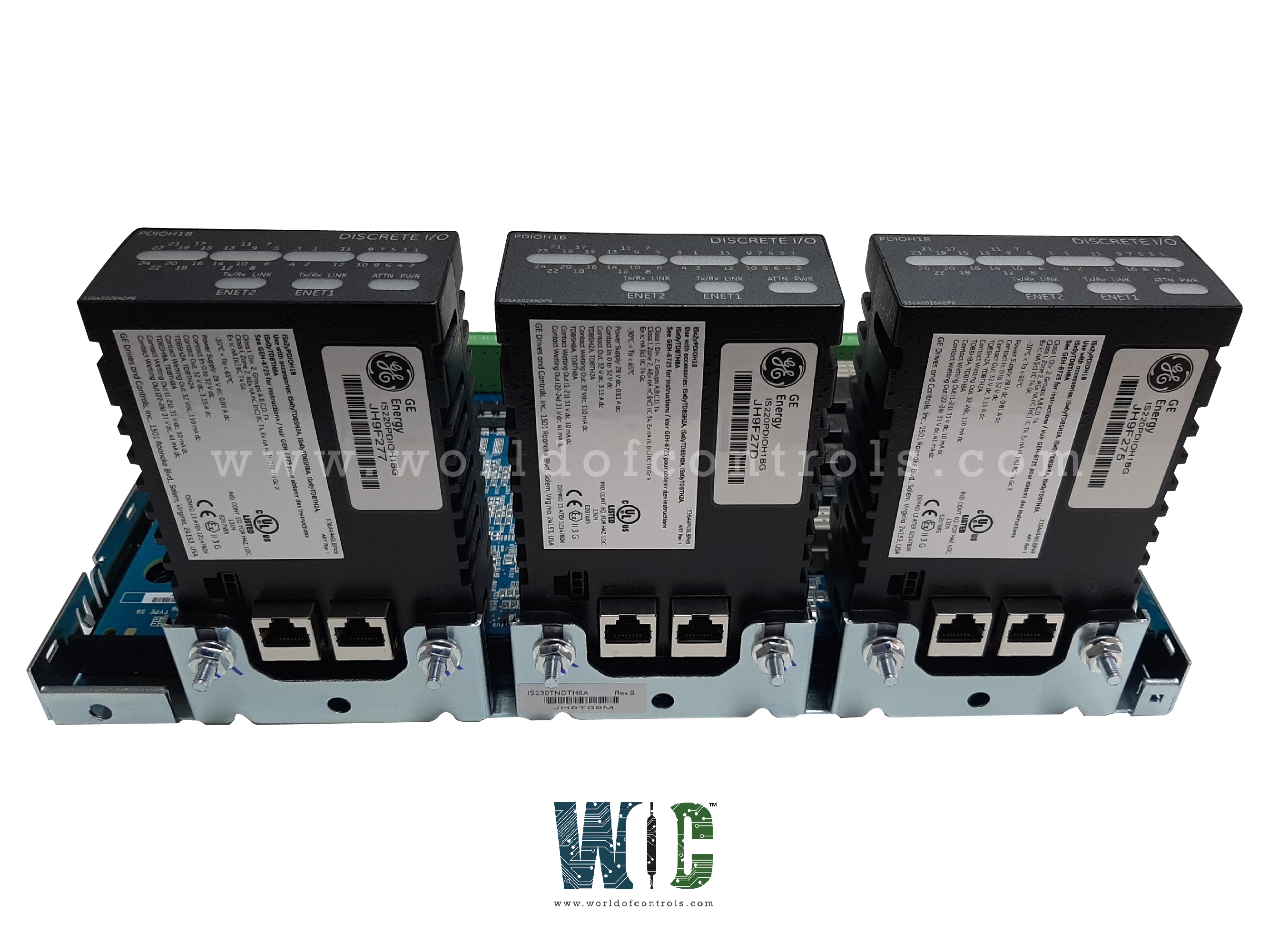SPECIFICATIONS
Part Number: IS230TNIDH1A
Manufacturer: General Electric
Series: Mark VIe
Operating Temperature: -30 to 65oC
Storage Temperature Shipping: -40 to 80oC
Function: Digital Input Module
Availability: In Stock
Country of Manufacture: United States (USA)
Functional Description
IS230TNIDH1A is a Digital Input Module manufactured and designed by General Electric. It is a part of the Mark VIe Control System. Digital Input Module interface with digital signals from sensors, switches, or other devices. Its primary function is to convert external digital signals into a format that can be processed by a programmable logic controller (PLC) or similar control system.
Features
- Receives digital signals typically representing binary states (ON/OFF, HIGH/LOW) from sensors or switches in the field.
- It processes the incoming signals to ensure they are compatible with the input requirements of the control system, which may involve voltage level adaptation, noise filtering, or signal isolation.
- Provides a standardized interface, often using terminal blocks or connectors, for easy wiring and connection of external devices.
- Incorporate electrical isolation between the external signals and the internal electronics to protect the control system from electrical noise, voltage spikes, and ground loop issues.
- Support various types of digital signals such as TTL (Transistor-Transistor Logic), CMOS (Complementary Metal-Oxide-Semiconductor), or industrial standards like 24VDC or 120VAC.
- Often include diagnostic LEDs or other indicators to show the status of input channels, aiding in troubleshooting and maintenance.
- Designed to be modular and scalable, allowing for easy expansion of input capacity by adding additional modules as needed.
System Network
- The Mark VIe control system is built upon a well-structured hierarchy of networks that serve as the backbone for interconnecting various nodes within the system. This hierarchical approach ensures efficient and reliable communication while accommodating the diverse functions required for seamless process control, monitoring, and facility-wide supervision.
- At the lowest level of the hierarchy, the I/O modules and controllers form the foundation of real-time process control. These modules and controllers are responsible for acquiring data from sensors and actuators, executing control algorithms, and managing critical process variables. By operating in real-time, these components enable swift and precise control actions, ensuring optimal performance and safety of the industrial processes.
- Moving up the hierarchy, the next layer comprises the Human-Machine Interface (HMI). The HMI acts as the bridge between the operators and the control system, providing a user-friendly interface for monitoring and interacting with the processes. Operators can visualize real-time data, control system parameters, and receive alarms or notifications through the HMI. This layer enhances operator efficiency, simplifies system management, and empowers operators to make informed decisions promptly.
- Beyond the HMI, the hierarchy extends further to encompass facility-wide monitoring and supervision. This higher-level layer provides a comprehensive view of the entire industrial facility, enabling operators and supervisors to oversee multiple processes simultaneously. Facility-wide monitoring allows for better coordination and analysis of data, facilitating more informed decision-making, and optimizing overall operational efficiency.
- The use of industry-standard components and protocols within each layer ensures seamless integration between different platforms and systems. By adhering to recognized standards, the Mark VIe control system becomes more versatile and flexible, enabling easy collaboration with various third-party devices and technologies. This compatibility fosters a robust and interconnected ecosystem, contributing to a more efficient and reliable control system.
- Additionally, the adherence to industry standards simplifies the maintenance and troubleshooting processes. Engineers and technicians can rely on well-documented and widely adopted practices, reducing the complexity of system management and enhancing system reliability.
WOC is happy to assist you with any of your automation requirements. For pricing and availability on any parts and repairs contact us.
FREQUENTLY ASKED QUESTIONS
What is IS230TNIDH1A?
It is a Digital Input Module manufactured and designed by General Electric
What is the function of the Human-Machine Interface (HMI)?
The HMI acts as an interface between operators and the control system. It provides a user-friendly platform for operators to monitor processes, visualize real-time data, control system parameters, and receive alarms or notifications. This enhances operator efficiency, simplifies system management, and enables informed decision-making.
What does the facility-wide monitoring layer entail?
Beyond the HMI, the hierarchy extends to encompass facility-wide monitoring and supervision. This layer offers a comprehensive view of the entire industrial facility, allowing operators and supervisors to oversee multiple processes simultaneously. It facilitates better coordination, data analysis, and informed decision-making, optimizing overall operational efficiency.
